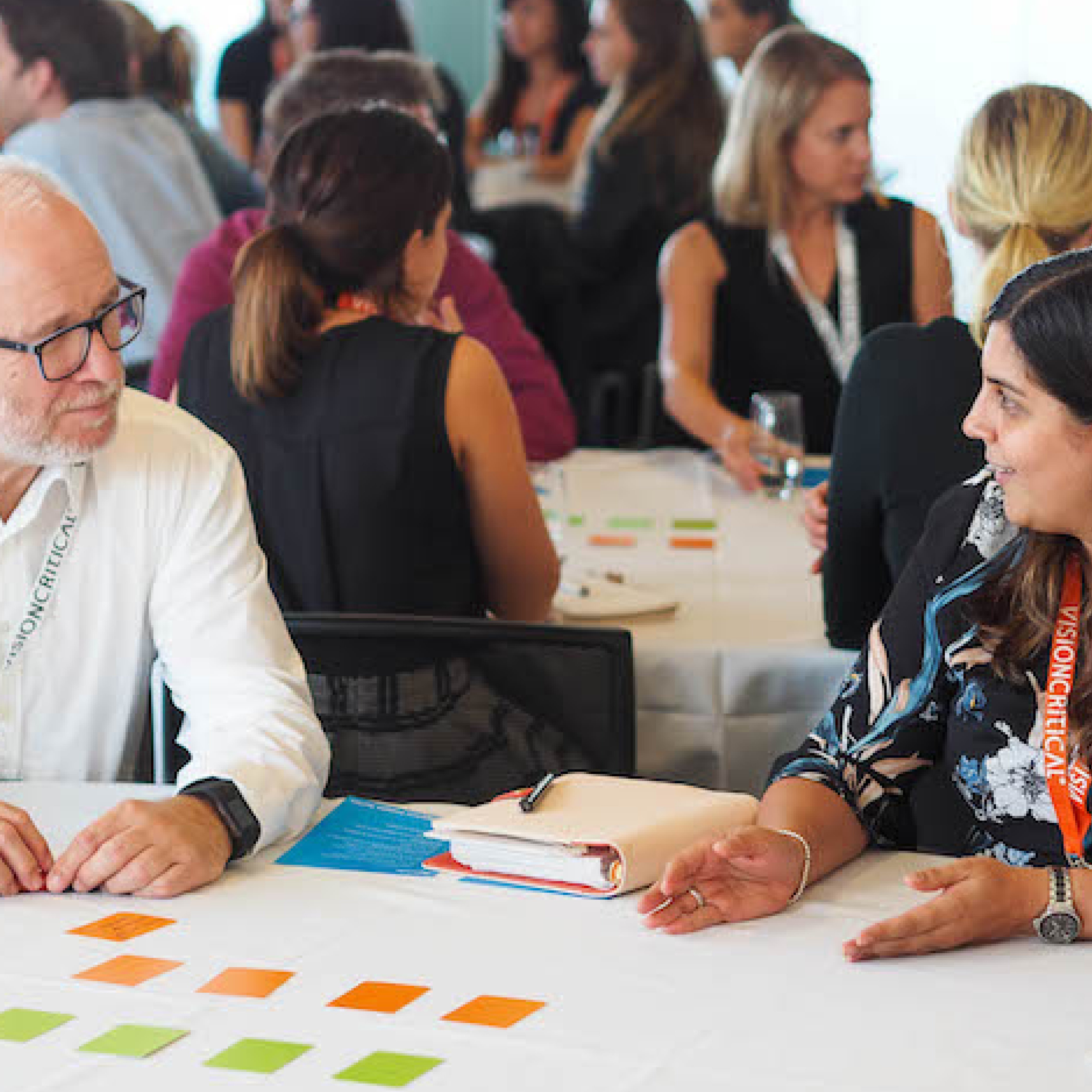Last week at Alida Activate, a customer experience (CX) masterclass event, Kerry Bodine took to the virtual stage for an unforgettable keynote on Demystifying Customer Experience. Kerry provided meaningful insights into what it takes to deliver exceptional customer experiences, and how to champion CX transformation within your own organization. With such an information-packed session, it wasn’t easy, but we’ve narrowed down our top three takeaways from Kerry’s spectacular keynote presentation.
1. A child can reveal more about experience design than multiple design awards
Kerry’s keynote opened with a heartfelt story of a shocking customer truth. Kerry shared the story of Doug Deets, designer of the MR scanner for GE Healthcare. After spending two years designing the device—and receiving many awards and accolades for his work—Deets wanted to see his machine in action. The first patient to use the machine was a little girl, and her reaction to seeing the device for her procedure was unsettling for Deets. She was bawling in terror because she was so afraid of the device. After speaking to the technician, he learned the ugly truth—80% of kids got so upset they had to be sedated for the procedure. At that moment, Deets felt like he had failed (despite his many awards). So Deets turned to pediatric patients for help designing a new experience. Inspired by the vivid imaginations of the machine’s potential users, Deets came up with “The Pirate Adventure”-themed experience. By simply putting decals on the walls, floor, and machine itself, he turned the sterile procedure room into an immersive pirate playhouse. He even took it a step further by including immersive sounds, smells, and technicians starting the experience in their best pirate voices with, “Arr you ready?”
These simple changes turned a terrifying experience into an enjoyable one. He knew he had succeeded when one child, after their procedure, asked, “Daddy, can we come back again tomorrow?” This story highlights how simple it can be to turn a bad experience into a great one. The key to success lies in listening to and learning from your customers. Their feedback is the foundation of any meaningful customer experience improvement.
2. Find your CX sweet spot
When you’re thinking about making changes to your customer experience or just supporting your customers, you need to be really intentional about what’s going to be good for those customers. But, you also need to think about what’s going to be good for your organization. Kerry refers to the intersection of these two things as the customer experience sweet spot. This is where you want to play. You want to make sure you’re squarely in the CX sweet spot when you’re engaged in the two key activities of customer experience:
- Designing the experience—a human-centered problem solving process. Identifying a customer pain point and creating a solution that will improve the experience for customers.
- Managing the experience—ensuring your organization is equipped to deliver on the intended experience. Making sure all of the pieces behind the scenes are aligned to support customers and the vision.
With so many different customers, each with their own unique interpretation of what makes a great experience, companies must prioritize their CX improvement efforts. Focusing on the experiences that will have the biggest impact on your customers and company is a surefire way to see the immediate, meaningful impact. Not sure how to prioritize CX efforts? Let your customers tell you. The first step is listening to your customers with the right feedback tools.
3. There are many feedback tools in the box, but they must be used correctly to be effective.
The good news is that there are lots of different ways to collect and analyze customer insights. Think about all of the research methods or inputs available to you as tools—just like a hammer or screwdriver. If you’ve ever used a hammer or screwdriver, you know they are each great at one particular task, but if you try to hammer in a screw or screw in a nail, you are not going to get the results you’re looking for. The combination of the feedback tools you implement will depend on your industry, customers, and research objectives. Your mileage may vary based on your organization, but there are a whole bunch of tools and each excels at a certain type of research:
- Surveys—The backbone of most customer insight programs. NPS has been the gold standard of surveys for more than a decade, but the landscape is quickly shifting. Shorter, more frequent surveys often try to capture feedback in the interaction the customer is completing. If organizations want to use surveys as a research tool, they need to adapt to customers dwindling attention spans.
- Video—A great way to develop empathy with customers. With video, customers are telling their stories and the real life goal or task that has brought them to do business with your organization.
- Communities—Communities are a fantastic way to collect insights and really engage customers on a deeper level. Communities are a VIP experience. You’re letting a select group of customers know they and their feedback are really important to your organization. The community experience can help them feel like a part of a special insiders club.
- Social Media—A great tool for hearing what customers think, but be sure to avoid the whiplash that can come from looking at and acting on polarizing reviews and comments.
- Call recordings/Chat recordings—Text analysis to find key themes and sentiment and what customers are saying as they interact with live agents, chatbots, IVR, or any of it. Get at that real world text input of what your customers are saying.
Bonus Takeaway: Start Gathering Employee Feedback Yesterday!
The secret feedback tool many organizations fail to take advantage of are their internal experts. These are the employees who work directly with your customers on a day-to-day basis and the employees who work behind the scenes to support customers. Employee feedback can often be gathered through the same methods as customer feedback. You can collect employee feedback not only on what they are hearing and seeing from customers (front-line employees, account managers, retail store employees), but also collect feedback on the ideas they have for improving the customer experience. You also want to ask them about their own employee experience. The employee experience is so important. If you don’t have a program to actively understand and improve your employee experience, you need to start on that right away. It is so critical for the well-being of your employees but also the experience you’re delivering.
Simon Sineck said it best, ”customers will never love a company until the employees love it first.”
Whether it’s learning from young children or front-line employees, the common thread for customer experience improvements is clear—you must listen and gather feedback. Companies can’t afford to make assumptions anymore, and with so many tools available for collecting feedback quickly and cost-effectively, there’s no excuse! Whether you’re just starting out on your CX efforts or a seasoned pro looking to take it to the next level, the Alida team can help you achieve your CX goals. Talk to a member of our team today!
Do you agree with our top takeaways from Kerry’s keynote? Let us know your thoughts! Haven’t watched the presentation yet? Click here to watch the on-demand recording now!








